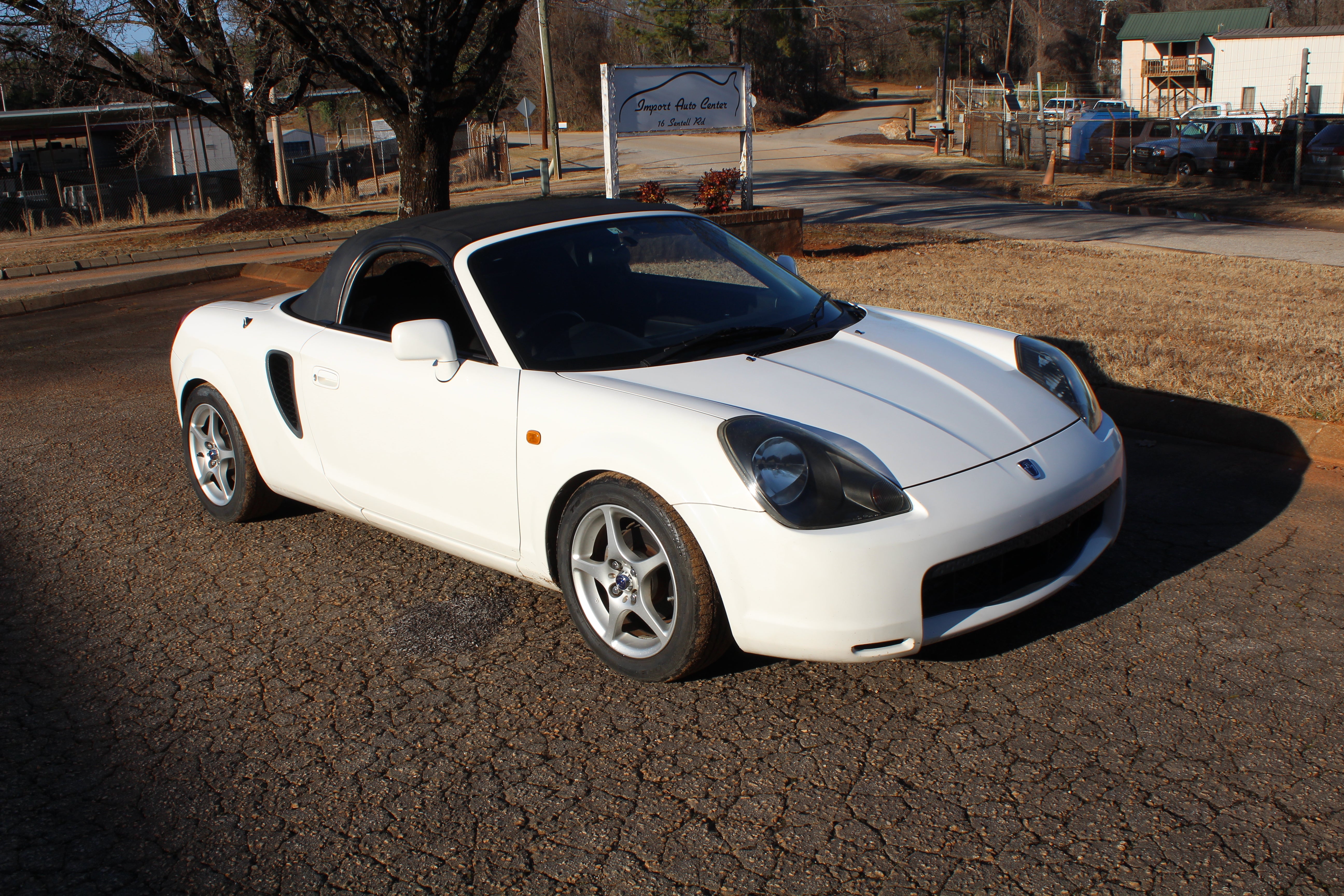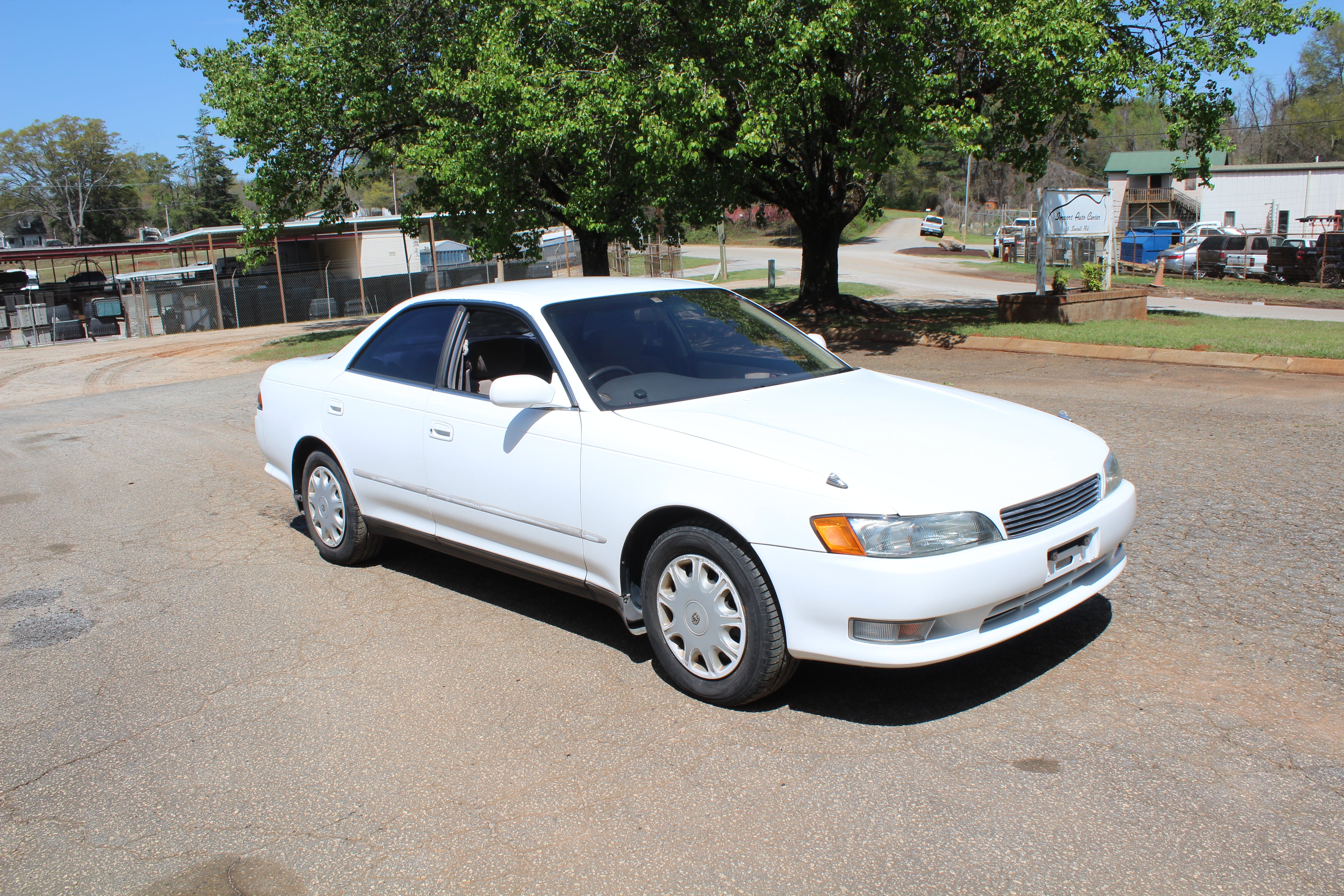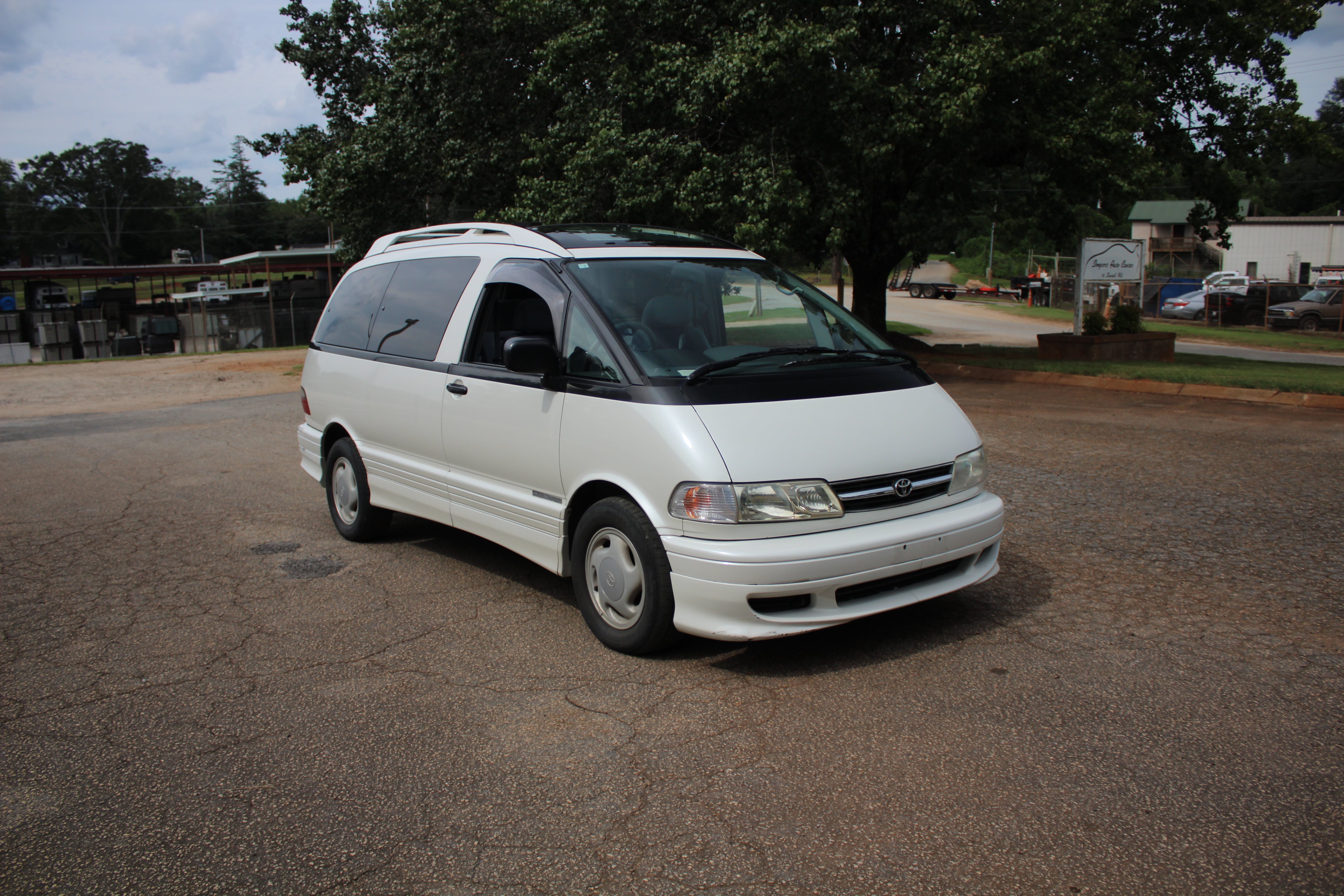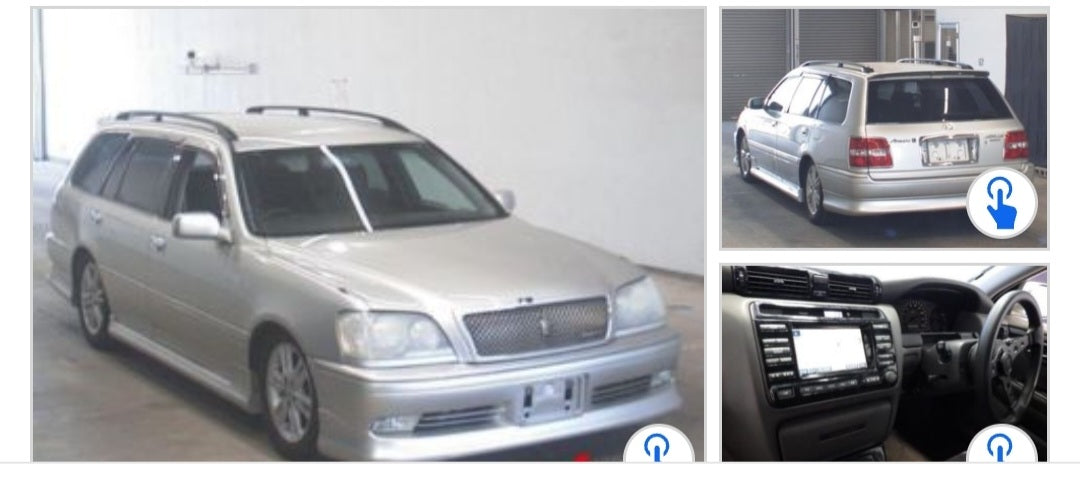1996 Toyota Estima Lucida G Van Right Hand Drive 2TZ-FE 4 Cylinder 2.4L Gas Engine 2wd Automatic Drivetrain with 85k miles original. Good Condition 0 rust. Van runs and drives really well.
Plenty of room to fit 6 people, 4 captain chairs, back seats fold down/fold up to have plenty of room, rear A/C control.
Van has some mods like a wheels, suspension, catback exhasut, intake, lip kit, curtains, radio and speakers. Runs and drives great real comfortable inside, everything works, interior is in great condition.
Has some flaws as pictured, rear upper vents held in with tape, the roof and hood seem to be painted black, has some fade on rear upper hatch and a little fade on rear hatch, rear bumper has some scuffs and scratches. Small dent on rear right wheel well , scuff on front bumper, some scratches around driver door handle, small scratch by left door all as pictured.
Contact Rob 864-505-5621 for any questions.
The first generation, designed by Toyota designer Tokuo Fukuichi and Calty designer David Doyle in 1987 (patent filed 24 December 1987), was introduced on 27 January 1990, had only one sliding side door for the rear passengers. It featured a unique mid-engined platform, where the inline four cylinder gasoline-powered engine was installed almost flat (at a 75-degree angle), beneath the front seats.
Installing the engine in this configuration allowed moderately easy access to the spark plugs, which were located underneath a panel on the upper left-side of the vehicle, after removing the front passenger seat, the carpet, and an access panel.
All engine-driven accessories, such as the alternator, power steering pump, air conditioning compressor, and radiator fan, are accessible from the front hood, driven off the front of the engine by an accessory driveshaft, and is known as the Supplemental Accessory Drive System, or "SADS." This allows for even front/rear weight distribution, which benefits ride quality and handling. However, it also prevents the installation of a larger engine, while the cost could not be relayed by sharing the platform with other vehicles.
The first generation Previa was 4,750 mm (187.0 in) long and 1,803 mm (71.0 in) wide. In Japan, two smaller versions, the Toyota Estima Lucida and Toyota Estima Emina, were produced, which were approximately 110 mm (4.3 in) narrower and 70 mm (2.8 in) shorter than the standard model, which continued to be sold in Japan but as the "wide-body" Estima.
All configurations have a driver and front passenger seat forward, and a three-seat bench seat at the rear that splits and folds flat against the sides of the cabin. The eight-seat configuration contains a 2/1 split swiveling bench seat in the middle row, while the seven-seat configurations contain either two independently swiveling captain's chairs (referred to as "Quad Seating"), in the middle row or a two-seat bench offset towards the driver's side.
The third row is also better upholstered in the seven-seat version. It was available with either four-wheel disc brakes or traditional front disc/rear drum brake setup, with anti-lock brakes (ABS) as an option.




















































































